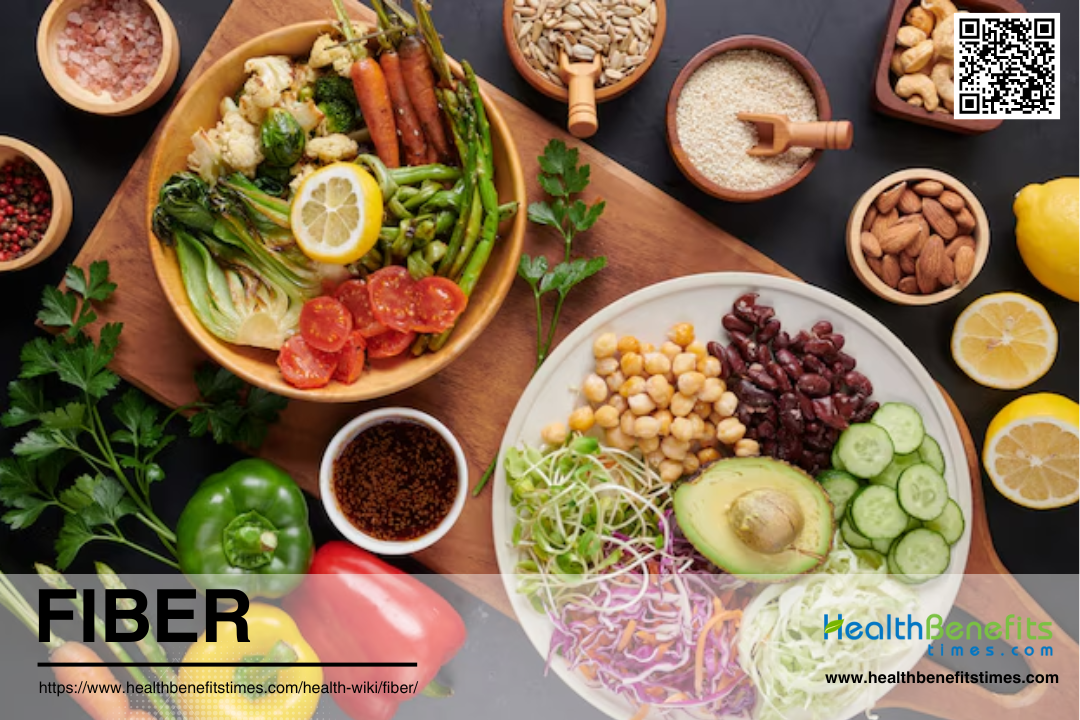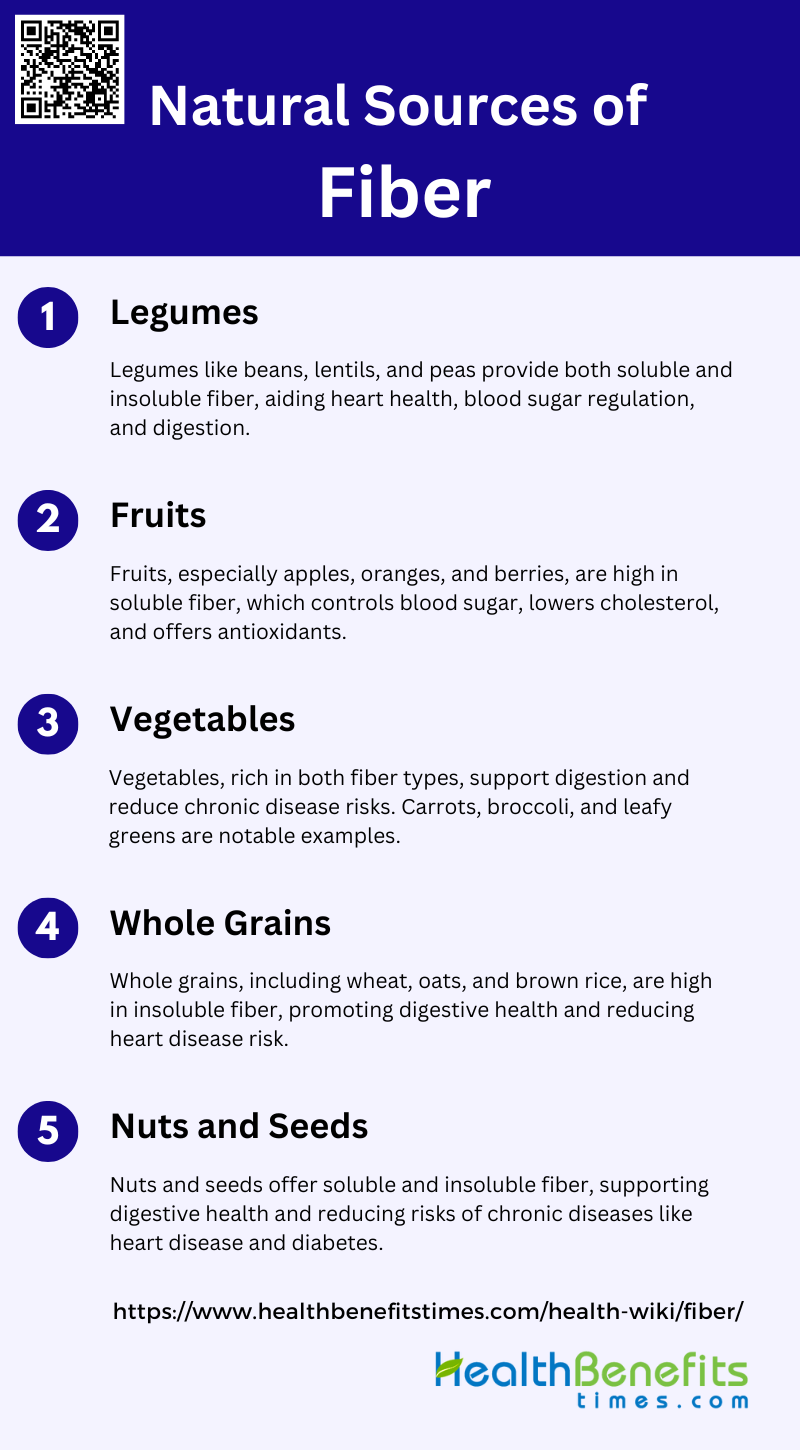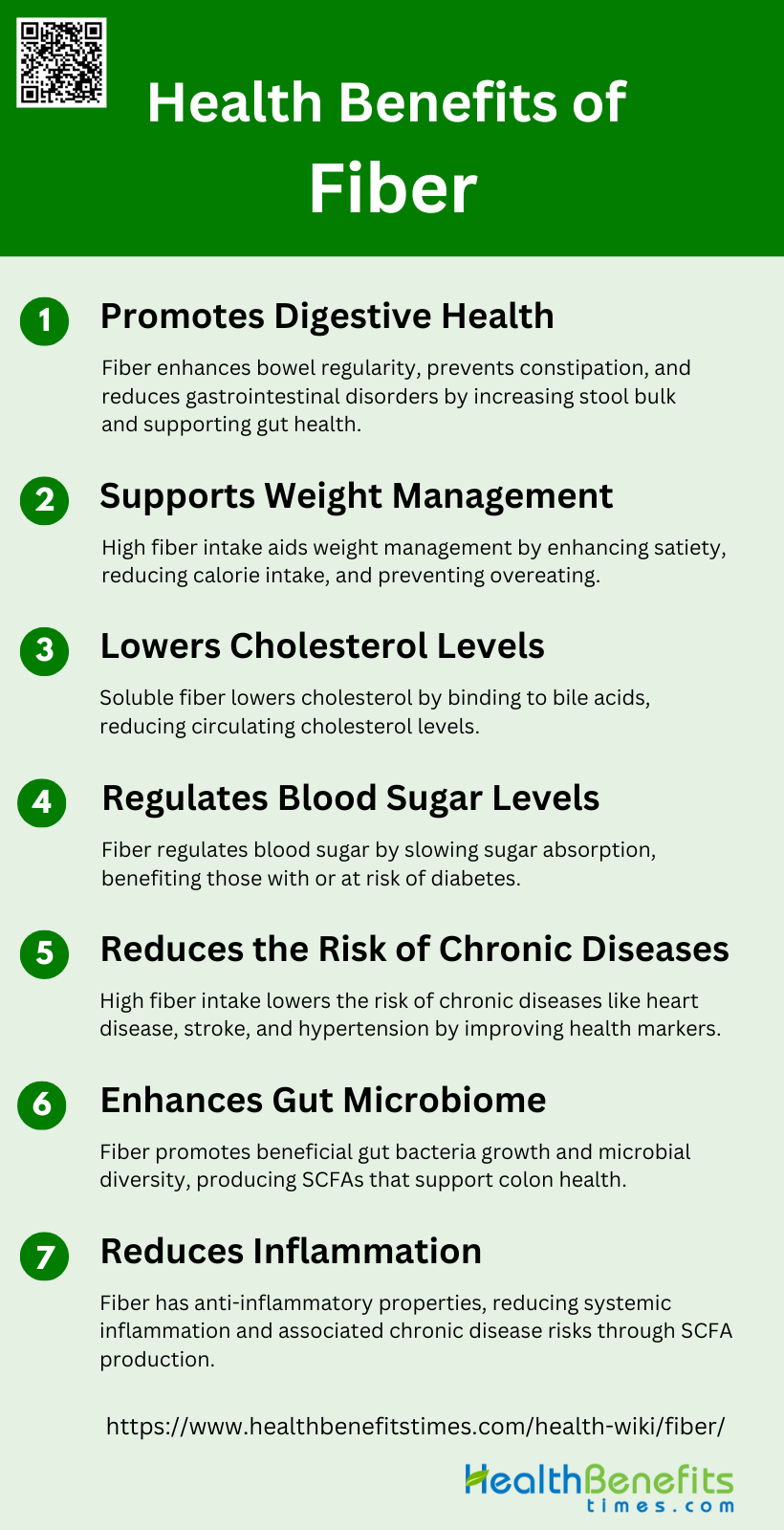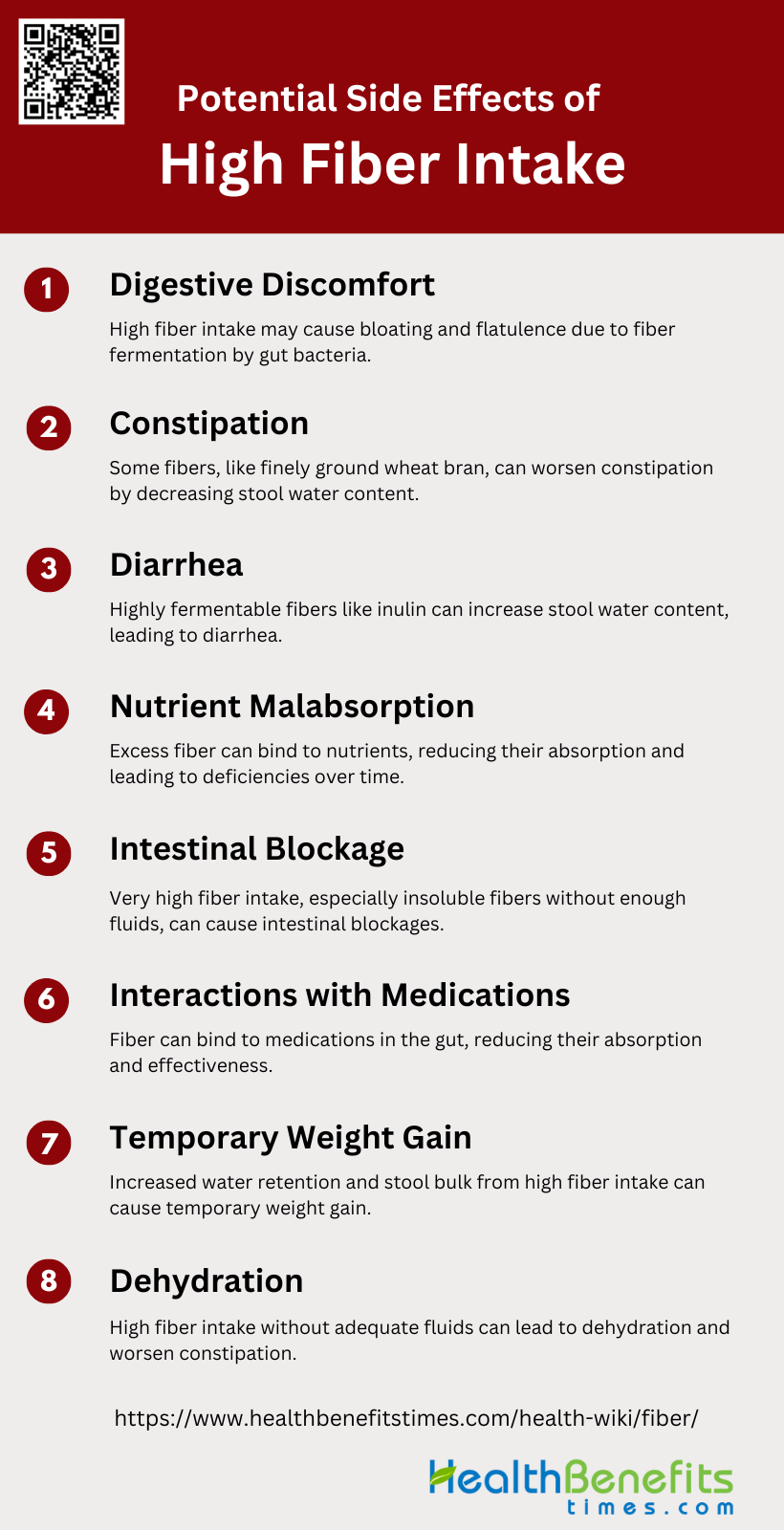Fiber, often referred to as dietary fiber, is a type of carbohydrate that the human body cannot digest. It is primarily found in plant-based foods such as fruits, vegetables, whole grains, and legumes. Unlike other carbohydrates, fiber passes through the digestive system relatively intact, aiding in various bodily functions. There are two main types of dietary fiber: soluble and insoluble. Soluble fiber dissolves in water to form a gel-like substance, which can help lower blood cholesterol and glucose levels. Insoluble fiber, on the other hand, promotes the movement of material through the digestive system and increases stool bulk, which can be beneficial for those who struggle with constipation or irregular stools. The health benefits of dietary fiber are extensive, including improved metabolic health, reduced risk of cardiovascular diseases, better glycemic control, and enhanced weight management. Despite these benefits, the average fiber intake in many Western diets is significantly below the recommended levels, highlighting the need for increased consumption of fiber-rich foods to improve overall health outcomes.
Types of fiber
Fiber is an essential component of a healthy diet, playing a crucial role in digestive health and disease prevention. There are two main types of dietary fiber: soluble and insoluble, each offering unique benefits. Understanding the differences between these fibers can help you make informed dietary choices to support your overall well-being.
- Soluble Fiber
Soluble fiber is a type of dietary fiber that dissolves in water to form a gel-like substance. It is known for its ability to slow down digestion and absorption of nutrients, which can help regulate blood sugar levels and lower cholesterol. Soluble fibers include pectin, gums, mucilage, and some resistant starches, and they are found in various fruits, vegetables, oats, and barley. Common foods that contain soluble fiber include oats, apples, beans, peas, barley, flax seeds, and citrus fruits. Soluble fiber offers several health benefits, such as lowering total and low-density lipoprotein (LDL) cholesterol levels, which can reduce the risk of cardiovascular disease. It also helps regulate blood sugar levels, making it beneficial for individuals with diabetes. Additionally, soluble fiber can aid in weight management by promoting a feeling of fullness. - Insoluble Fiber
Insoluble fiber is a type of dietary fiber that does not dissolve in water. Instead, it adds bulk to the stool and helps food pass more quickly through the stomach and intestines. This type of fiber is essential for maintaining regular bowel movements and preventing constipation. Insoluble fibers include lignin, cellulose, and hemicellulose, and they are found in whole grains, bran, nuts, vegetables and seeds. Insoluble fiber promotes regular bowel movements and helps prevent constipation by increasing fecal bulk and decreasing intestinal transit time. This type of fiber is also associated with a lower risk of developing diverticular disease and may contribute to overall digestive health.
Natural sources of fiber
Fiber is a vital part of a balanced diet, contributing to digestive health and disease prevention. It is found in a variety of natural sources, each offering unique benefits to the body. Below are some key natural sources of fiber that you can incorporate into your diet:
1. Legumes
Legumes, including beans, lentils, and peas, are excellent sources of dietary fiber. They contain both soluble and insoluble fibers, which contribute to various health benefits. Soluble fiber in legumes helps lower blood cholesterol levels and regulate blood sugar, making them beneficial for cardiovascular health and diabetes management. Insoluble fiber aids in digestive health by promoting regular bowel movements and preventing constipation. Additionally, legumes are rich in resistant starch, which acts like dietary fiber and supports the growth of beneficial gut bacteria, potentially reducing the risk of colorectal cancer. Increasing legume consumption can significantly contribute to meeting daily fiber intake recommendations.
2. Fruits
Fruits are a vital source of dietary fiber, particularly soluble fiber, which includes pectin and other gel-forming substances. This type of fiber slows digestion and absorption, helping to control blood sugar levels and lower cholesterol. Fruits like apples, oranges, and berries are especially high in soluble fiber. They also provide essential vitamins, minerals, and antioxidants, contributing to overall health and disease prevention. Regular consumption of fruits has been associated with a reduced risk of chronic diseases such as cardiovascular disease and certain cancers. Despite their benefits, many people do not consume enough fruits to meet the recommended fiber intake.
3. Vegetables
Vegetables are another crucial source of dietary fiber, offering both soluble and insoluble types. Soluble fiber in vegetables helps manage blood cholesterol and glucose levels, while insoluble fiber promotes digestive health by increasing stool bulk and preventing constipation. Vegetables such as carrots, broccoli, and leafy greens are particularly high in fiber. Consuming a variety of vegetables can help reduce the risk of chronic diseases, including cardiovascular disease and colorectal cancer. Despite their health benefits, vegetable intake remains below recommended levels for many individuals, highlighting the need for increased consumption.
4. Whole Grains
Whole grains, including wheat, oats, barley, and brown rice, are rich in dietary fiber, particularly insoluble fiber. This type of fiber aids in digestive health by speeding up intestinal transit and increasing fecal bulk. Whole grains also contain soluble fiber, which can help lower cholesterol and regulate blood sugar levels. Studies have shown that higher intake of whole grains is associated with a reduced risk of cardiovascular disease and colorectal cancer. However, whole grains contribute only a small proportion of dietary fiber in the typical American diet, indicating a need for greater emphasis on their consumption.
5. Nuts and Seeds
Nuts and seeds are excellent sources of both soluble and insoluble dietary fiber. They are particularly rich in insoluble fiber, which helps maintain digestive health by promoting regular bowel movements and preventing constipation. Nuts and seeds also provide essential nutrients, including healthy fats, proteins, vitamins, and minerals, contributing to overall health and disease prevention. Regular consumption of nuts and seeds has been linked to a lower risk of chronic diseases such as cardiovascular disease and type 2 diabetes. Despite their benefits, nuts and seeds are often under-consumed, suggesting a need for increased dietary inclusion.
Health Benefits of Fiber
Fiber is an essential nutrient that offers numerous health benefits, from improving digestive health to reducing the risk of chronic diseases. It is found in various plant-based foods and comes in two main types: soluble and insoluble. Below are some of the key health benefits of incorporating fiber into your diet:
1. Promotes Digestive Health
Dietary fiber plays a crucial role in promoting digestive health by enhancing bowel regularity and preventing constipation. Fiber increases stool bulk and facilitates its passage through the digestive tract, reducing the risk of gastrointestinal disorders such as diverticulitis and hemorrhoids. Additionally, fiber intake has been shown to alleviate symptoms of gastroesophageal reflux disease and duodenal ulcers by improving gut motility and reducing inflammation. The fermentation of dietary fiber by gut microbiota produces short-chain fatty acids (SCFAs), which further support gut health by maintaining the integrity of the gut lining and modulating immune responses.
2. Supports Weight Management
High fiber intake is associated with better weight management due to its ability to enhance satiety and reduce overall calorie intake. Fiber-rich foods require more chewing and take longer to digest, which helps in controlling hunger and preventing overeating. Studies have shown that fiber supplementation in obese individuals significantly enhances weight loss and reduces body fat accumulation. For instance, yam bean fiber has been found to inhibit excessive body weight gain and reduce white adipose tissue mass in mice fed a high-fat diet, highlighting its potential as a natural remedy for obesity.
3. Lowers Cholesterol Levels
Dietary fiber, particularly soluble fiber, is effective in lowering cholesterol levels. Soluble fiber binds to bile acids in the intestine, which are then excreted from the body. This process forces the liver to use cholesterol to produce more bile acids, thereby reducing the levels of circulating cholesterol. Research has demonstrated that increased fiber intake can significantly decrease total cholesterol and low-density lipoprotein (LDL) cholesterol levels. For example, a systematic review found that dietary fiber significantly decreased total cholesterol in patients with type 2 diabetes.
4. Regulates Blood Sugar Levels
Fiber helps regulate blood sugar levels by slowing the absorption of sugar into the bloodstream, which prevents spikes in blood glucose and insulin levels. This is particularly beneficial for individuals with diabetes or those at risk of developing the condition. Studies have shown that increased intake of soluble fiber improves glycemia and insulin sensitivity in both non-diabetic and diabetic individuals. Additionally, dietary fiber has been found to sustain normoglycemia, glucose tolerance, and insulin sensitivity while preventing hyperinsulinemia in mice.
5. Reduces the Risk of Chronic Diseases
High fiber intake is linked to a lower risk of developing several chronic diseases, including coronary heart disease, stroke, hypertension, and certain gastrointestinal diseases. Fiber’s ability to lower blood pressure, improve lipid profiles, and regulate blood sugar levels contributes to its protective effects against these conditions. For instance, a high-fiber diet has been shown to reduce the incidence of hypertension and heart failure in hypertensive mice by modifying gut microbiota and increasing the abundance of acetate-producing bacteria.
6. Enhances Gut Microbiome
Dietary fiber significantly enhances the gut microbiome by promoting the growth of beneficial bacteria and increasing microbial diversity. The fermentation of fiber by gut bacteria produces SCFAs, which serve as an energy source for colon cells and have anti-inflammatory properties. Studies have shown that fiber consumption increases the relative abundance of beneficial bacteria such as Bifidobacterium and Lactobacillus, while reducing the prevalence of pathogenic bacteria. For example, a high-fiber diet increased the abundance of acetate-producing bacteria and improved gut microbiota composition in hypertensive mice.
7. Reduces Inflammation
Fiber has anti-inflammatory properties that help reduce systemic inflammation, which is a risk factor for many chronic diseases. The fermentation of fiber produces SCFAs, which have been shown to reduce the production of pro-inflammatory cytokines and enhance the expression of anti-inflammatory genes. Research has demonstrated that dietary fiber can lower levels of inflammatory markers such as C-reactive protein and interleukin-6. For instance, yam bean fiber significantly reduced inflammation in mice fed a high-fat diet by modulating gut microbiota and preventing the elevation of inflammatory markers.
Recommended Daily Intake
The recommended daily fiber intake varies by age and gender. For adults aged 19-50, the recommended daily allowance (RDA) is 38 grams for men and 25 grams for women, while for those over 50, it is 30 grams for men and 21 grams for women. Children and adolescents have lower requirements, with mean intakes observed at 13.2 grams per day. To increase fiber intake, practical strategies include incorporating more fruits, vegetables, and whole grains into meals. For example, adding vegetables like carrots and broccoli to dishes, choosing whole grain bread and cereals, and snacking on fruits such as apples and bananas can significantly boost fiber intake. Additionally, legumes, nuts, and seeds are excellent sources of dietary fiber and can be easily included in various meals. These dietary adjustments not only help meet fiber recommendations but also contribute to overall health by reducing the risk of chronic diseases such as cardiovascular disease and type 2 diabetes.
Potential Side Effects of High Fiber Intake
While fiber is crucial for a healthy diet, consuming it in excessive amounts can lead to certain side effects. These can range from digestive discomfort to nutrient absorption issues. Below are some potential side effects of a high fiber intake:
1. Digestive Discomfort
High fiber intake can lead to digestive discomfort, including bloating and flatulence. This is primarily due to the fermentation of fiber by gut bacteria, which produces gas as a byproduct. Studies have shown that while fiber can improve stool frequency and consistency, it also significantly increases flatulence and bloating. For instance, psyllium and pectin, which are effective in treating constipation, are also associated with higher rates of flatulence. Therefore, while fiber is beneficial for digestive health, it can cause discomfort in some individuals.
2. Constipation
Although fiber is often recommended to alleviate constipation, its effectiveness can vary. Some studies indicate that certain types of fiber, such as psyllium, are more effective than others like wheat bran. However, not all studies support the use of fiber for constipation relief, and some even suggest that certain fibers can be constipating. For example, finely ground wheat bran has been shown to decrease stool water content, potentially worsening constipation. Thus, the type and form of fiber are crucial in managing constipation effectively.
3. Diarrhea
High fiber intake can also lead to diarrhea, particularly when the fiber is highly fermentable. Soluble fibers like inulin and fructooligosaccharides can exacerbate diarrhea due to their fermentation in the gut, leading to increased water content in stools. While fiber is generally recommended to normalize stool form, its impact can vary depending on the individual’s gut microbiota and the type of fiber consumed. Therefore, individuals prone to diarrhea should be cautious with high-fiber diets.
4. Nutrient Malabsorption
Excessive fiber intake can interfere with the absorption of essential nutrients. This is particularly evident in individuals with pancreatic insufficiency, where high fiber diets can exacerbate fat malabsorption. Fiber can bind to minerals and other nutrients, reducing their bioavailability and leading to deficiencies over time. Therefore, while fiber is beneficial for overall health, it is important to balance its intake to avoid nutrient malabsorption.
5. Intestinal Blockage
In rare cases, very high fiber intake can lead to intestinal blockage, especially if not accompanied by adequate fluid intake. This is more likely to occur with insoluble fibers that do not dissolve in water, such as wheat bran. These fibers can bulk up and potentially cause blockages in the intestines, particularly in individuals with pre-existing gastrointestinal conditions. Therefore, it is crucial to increase fiber intake gradually and ensure sufficient hydration.
6. Interactions with Medications
Fiber can interact with certain medications, affecting their absorption and efficacy. For example, fiber supplements can bind to medications in the gut, reducing their absorption and effectiveness. This is particularly important for medications that require precise dosing, such as those for diabetes and cardiovascular diseases. Therefore, individuals on medication should consult healthcare providers before significantly increasing their fiber intake.
7. Temporary Weight Gain
High fiber intake can lead to temporary weight gain due to increased water retention and stool bulk. Fiber absorbs water in the gut, leading to a temporary increase in body weight. This is generally not a cause for concern and is often a sign that the fiber is working to improve bowel function. However, individuals should be aware of this potential side effect when increasing their fiber intake.
8. Dehydration
Inadequate fluid intake alongside high fiber consumption can lead to dehydration. Fiber absorbs water in the gut, and without sufficient fluid intake, this can lead to dehydration and exacerbate constipation. It is essential to drink plenty of water when increasing fiber intake to prevent dehydration and ensure the fiber can work effectively. Therefore, hydration is a key component of a high-fiber diet.
Common Fiber Myths and Facts
Myth 1: “Fiber is only good for digestion.”
Fiber is often associated solely with digestive health, but its benefits extend far beyond this. Soluble fibers, such as beta-glucan and psyllium, have been shown to significantly lower cholesterol levels and improve glycemic control, which are crucial for cardiovascular health and diabetes management. Additionally, fiber’s role in modulating gut microbiota and fermentation metabolites has important implications for overall gastrointestinal health and disease prevention. Therefore, fiber’s health benefits are multifaceted and not limited to digestion alone.
Fact
Beyond its well-known benefits for digestive health, dietary fiber offers a multitude of additional health advantages. High fiber intake is associated with a reduced risk of cardiovascular diseases, as it helps lower cholesterol levels and improve glycemic control, particularly through the consumption of high-viscosity soluble fibers like psyllium and β-glucan. Fiber also plays a crucial role in metabolic health by enhancing insulin sensitivity and aiding in weight management, which can help prevent obesity and type 2 diabetes. Furthermore, certain fibers act as prebiotics, promoting the growth of beneficial gut bacteria and thereby supporting immune function and potentially improving mood and memory. Additionally, fiber intake is linked to a lower risk of colorectal cancer and other gastrointestinal diseases, highlighting its importance in overall health maintenance. Therefore, increasing dietary fiber intake is a vital public health strategy to enhance both metabolic and overall health.
Myth 2: “All fiber supplements are the same.”
Fiber supplements vary significantly in their physical properties and health benefits. Soluble fibers like psyllium and beta-glucan form viscous gels in the gastrointestinal tract, which can lower cholesterol and improve glycemic control. In contrast, non-viscous soluble fibers and insoluble fibers do not offer these benefits. Insoluble fibers like wheat bran can aid in stool formation by mechanically irritating the gut mucosa, while some fibers, such as wheat dextrin, may even be constipating.
Fact
Fiber supplements can be beneficial for enhancing fiber intake, especially in individuals with specific dietary needs or restrictions. However, obtaining fiber from natural food sources such as fruits, vegetables, legumes, and whole grains is generally more advantageous. Natural sources provide a diverse range of fibers, including both soluble and insoluble types, which contribute to overall health by supporting digestive function and metabolic health. In contrast, fiber supplements may not offer the same variety and can sometimes lead to gastrointestinal discomfort if not used properly.





